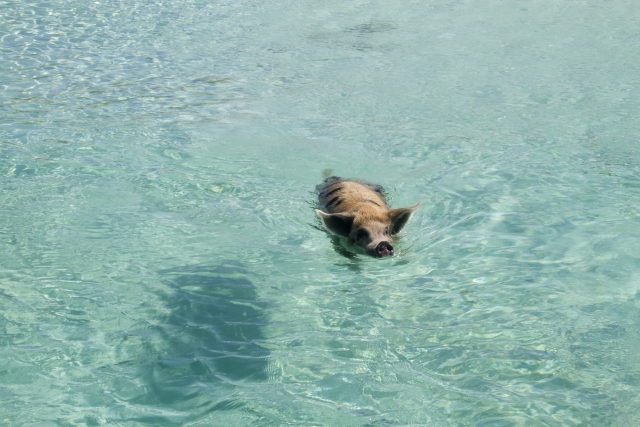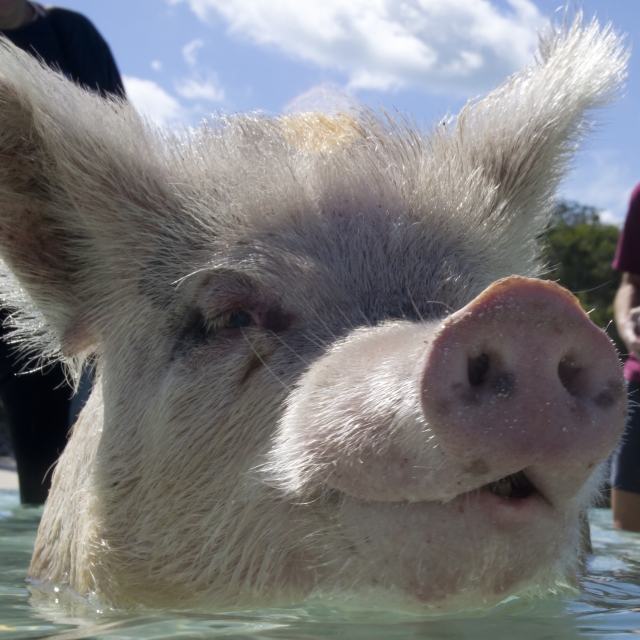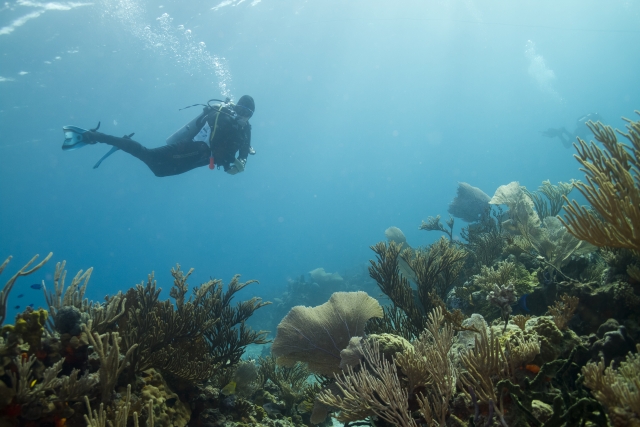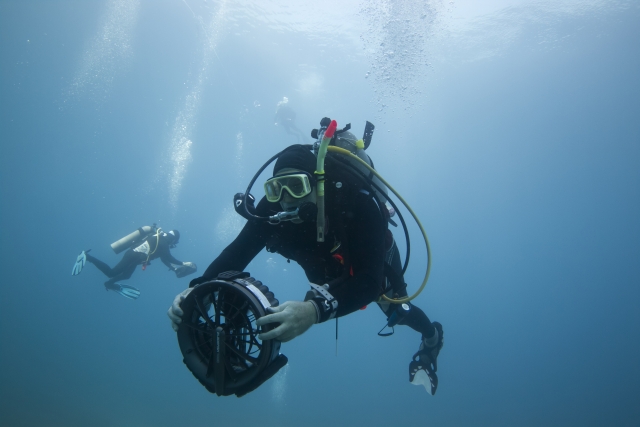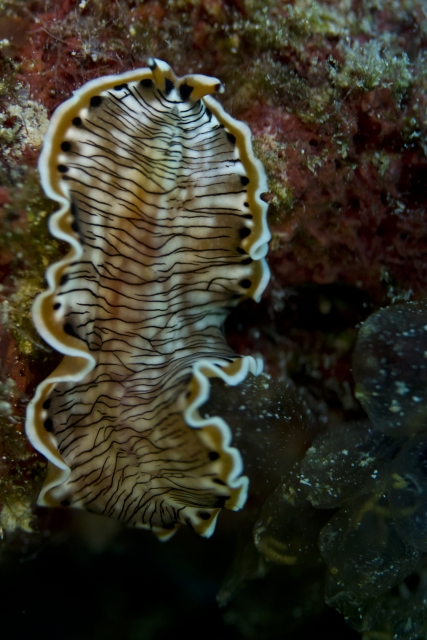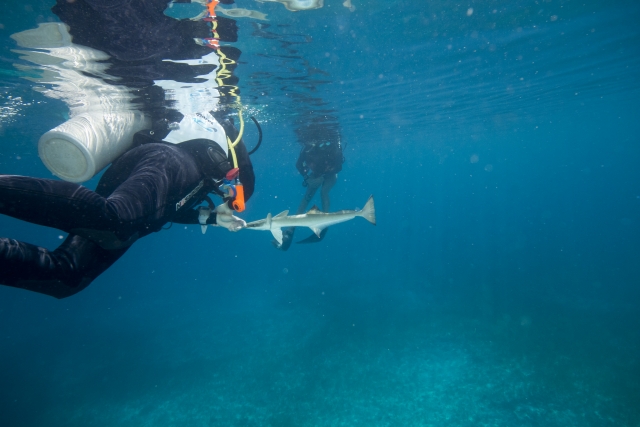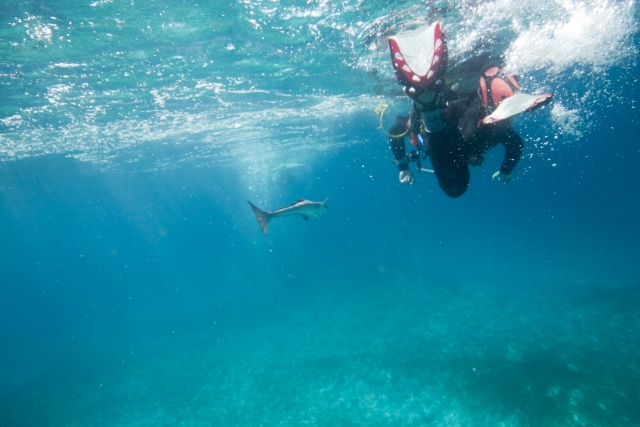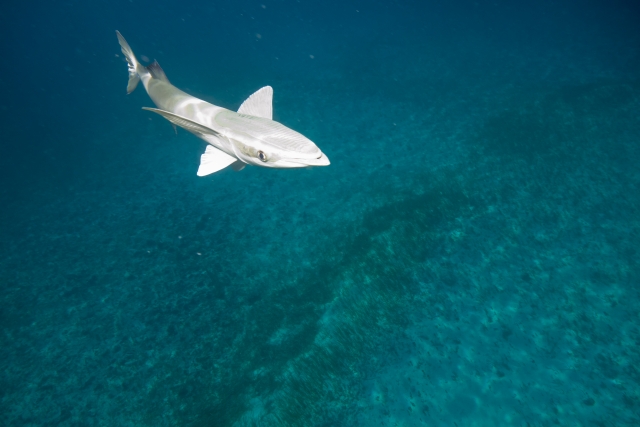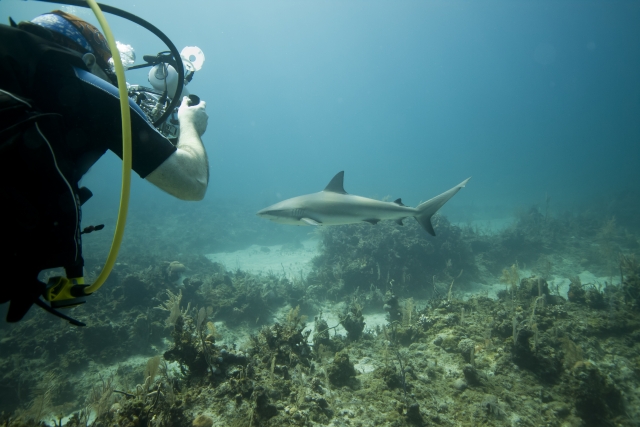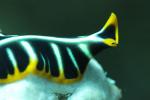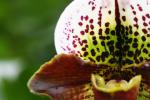underwater
Aqua Cat: Swimming Pigs
ktuli — Tue, 11/04/2014 - 21:03
Ok - I'll be honest with you... when the Captain announced during breakfast that the first dive of the day needed to be kept from getting too long so that we could skip the second dive of the day to go see the swimming pigs, I honestly wasn't all that excited. I mean seriously... they're just pigs, right?
Well, sort of... they were just pigs... but it was a pretty cool experience.
As we approached the beach aboard the Sea Dog (the Aqua Cat's tender boat), there was quite the welcoming committee, including some that swam out to greet us.
So yeah - pigs might not be able to fly, but they definitely can swim.
The crew had brought a bag of apples for us to feed the pigs, so we spent some time interacting with them. I have some video that I will share soon (I think I want to put multiple clips together into a single video, and so need some extra time for that).
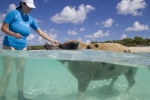 |
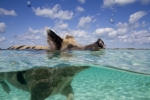 |
 |
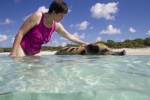 |
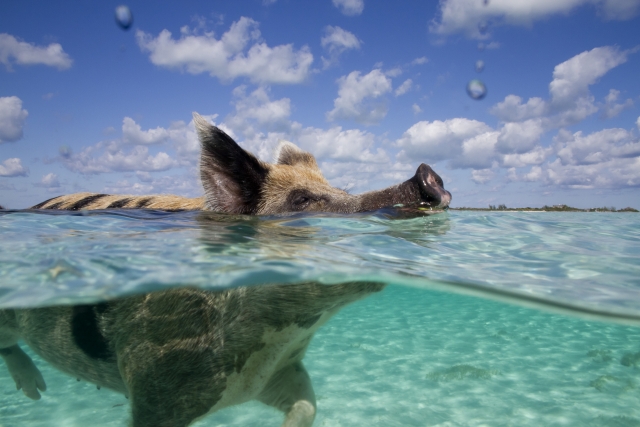 |
|||
So yeah, as it turns out, skipping a dive to visit the swimming pigs of the Bahamas really was worth while. Talking to Brigette about it, I guess they have been on the Aqua Cat vessel a couple times before and the opportunity to visit these pigs didn't present itself, so this really was a treat.
Oh - I did learn one more thing...
These pigs really didn't have a problem with hamming it up for the cameras! (HAH! I couldn't pass that one up!)
Thanks for stopping by!
- Bill
Aqua Cat: Caribbean Reef Shark
ktuli — Mon, 11/03/2014 - 20:40
Ok - as promised... this trip had sharks... lots of sharks... up close and personal...
Man - that was fun... it gets better and crazier (remember - we've got a shark feeding dive coming up later in the week!)
- Bill
Divehards International: Instructors, Divemasters, Friends!
ktuli — Sat, 11/01/2014 - 16:49
So I know I usually just talk about and share photos of the critters we see on our dives, but let's take a few minutes and talk about Mike and Brigette Nadler - our dive instructors, divemasters, trip planners, friends!
We started our scuba class at the old CCAC North Shore campus pool in early 2011. To be honest, I had a really rough time starting out with scuba... my brain just did not want to accept the idea of breathing underwater, I was not a strong swimmer, and I just all around had a difficult time getting started. Both Brigette and Mike worked with me to help me to get comfortable and figure out what was being a sticking point for me, and I did indeed eventually finish the course. We then got our open water certifications in Summersville, WV that summer.
Since then we've been on six different trips with them and they continue to help us with instruction and guidance. Both of them are constantly paying attention to their divers and are able to help improve your diving by providing insight and suggestions on things to improve. For me specifically, this has ranged from simple things like noticing that I easily get cold in the water and recommending additional layers, to more subtle things like that I do not hover level in the water and suggesting I use trim weights to help keep myself more level (which reduces the effort it takes to move through the water and thus reduce air consumption). The cool part about it though is that they never make it feel like they're lecturing you or belittling your diving abilities - all of their observations and how they present them to you are done in a constructive and helpful manner that you almost don't even notice that they're still giving you additional diving instruction well after you've "completed" their scuba class.
It seems like every trip I end up with at least one photo of Brigette underwater. I think this is probably because when we're diving, Brig seems to be almost one with the water and just fits into the landscape. I think almost all of those photos I have of her are of the reef with Brig just floating nearby (and this one is no different). Brigette's air consumption (or lack thereof) is pretty well legendary within our group (actually, this last trip we literally witnessed her complete two hour long dives on a single tank of air!). I think that air consumption is due in part to how Brigette seems to dive - effortless, smooth, streamlined... completely calm. That's exactly how Brig's instructing style works too.
Mike is probably the polar opposite... in a good way of course. With who knows how many thousands of dives in his log book, Mike is still excited to hit the water every single time. That excitement is evident on land too as Mike is boisterous and constantly having fun. As he puts it, he is an "equal opportunity antagonizer" which translates to the fact that he is constantly making sure that everyone is involved in the group and no one gets overlooked. Back in the water, Mike is constantly zipping around, and I think on any given dive he visits with each and every diver at least once. Not in the sense that he is taking roll-call and checking on everyone, but more that he is excited to interact with everyone and see everything that is going on. But that whole time, he definitely is paying attention to each and every one of his divers. I think it might be because of that zipping around that I didn't seem to have many photos of Mike, but this trip I did manage to several including this pretty cool one...
Honestly, I think Brig looks a little awkward with that underwater vehicle/scooter, but that's probably just a case of bad timing on my part.
Together, Mike and Brigette make the perfect combination. As dive instructors, they are incredibly thorough and patient - making sure that their students understand the material and are completely prepared to dive. As divemasters, they continue their instruction, constantly making sure their divers are learning and having a safe experience underwater. As trip planners, they constantly try to find new experiences for the group, exploring new places, and returning to old tried-and-true favorites.
If you're looking to get into scuba diving, there isn't a better set of people you'd want leading the way for you!
- Bill
Aqua Cat: Lined Flatworm
ktuli — Fri, 10/31/2014 - 18:25
While not technically a nudibranch, Flatworms are still a fun find!
Technical Data: Canon EOS 7D, Canon EF 100mm f/2.8L Macro IS USM, 1/120th sec at f/4.5. ISO 1250. Ikelite Housing and Port with dual Ikelite 161 Strobes. Raw conversion in Adobe Camera Raw.
This is apparently a juvenile Lined Flatworm (Pseudoceros crozieri) - I was confused on the identification until a bit of research turned up that the juveniles of this species have that orange border that will fade as they grow into an adult (and that tidbit of information is lodged in my brain forever now!).
- Bill
Aqua Cat: Remora Visit
ktuli — Thu, 10/30/2014 - 16:38
Another critter that we received a number of visits from on this trip were remoras.
For those who are curious, a remora is a type of fish with a suction-cup like disc on its head that it uses to attach itself to larger animals such as sharks, turtles, etc. It then uses the larger animal to hitch a ride and to also get free meals in the form of scraps. As such, you don't normally see a free-swimming remora without its host animal. Some species grow to about 3 feet long, but usually they seem to be in the 12-18 inch range.
Well, for whatever reason, we had multiple dives where we would see free-swimming remoras without a host animal. On this early dive, the remora was quite interested in our group, and looked like it was ready to latch right onto one of our divers...
First it gave Brigette a bit of a start...
Then it thought about latching onto her scuba fin...
Which garnered enough attention that it quickly became a subject for many of the divers carrying cameras...
Then I think it considered latching onto my leg...
And I think it gave Mike a good chase! (ok, I think this is a coincidence, but it certainly looks like Mike is swimming like crazy to try and get away from it, no?)
It also stopped by to say hi and get petted by Anya...
And finally came in for its close-up photo.
Unfortunately, I was still shooting with the Sigma 10-20mm lens at this point, so I had to be really close to get photos that worked (otherwise everything looked tiny in the frame). Luckily, only a couple more dives before I started figuring things out and getting more consistent results.
Stay tuned!
- Bill
Aqua Cat: Photo Recovery
ktuli — Wed, 10/29/2014 - 19:23
Ok - so admittedly, I had two years of rust on my underwater photography skills when I went on this trip, and it definitely showed. I've had to do some work to salvage pretty much every photo I've kept so far, and each one has needed a pretty heavy dose of cleanup. Then I came to today's photo...
I was about to delete this one; at first glance, it is a complete loss and on any other day, I very well may have just hit the delete key and not thought twice about it. But for whatever reason, something caught my eye, and I wondered if I could recover enough from the file to make a worthwhile image. I ran it through a number of adjustments within Adobe Camera Raw, and then finally processed it into a sepia tone using Nik Silver Efex Pro 2.
I found the end result pretty pleasing to be honest...
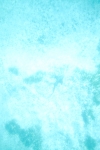 1. Straight out of the camera |  |
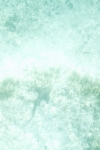 3. Attempted color correction in ACR |
 2. Initial corrections in ACR | 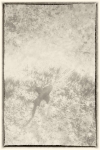 4. Final result after Silver Efex |
Technical Data: Canon EOS 7D, Sigma 10-20mm f/4-5.6 EX DC HSM AF at 14mm, 1/250 sec at f/5.6. ISO 400. Ikelite Housing and Port with dual Ikelite DS 161 Strobes in eTTL mode. Raw conversion Adobe Camera Raw, additional processing in Adobe Photoshop CS5 with Nik Silver Efex Pro 2
What do you think? I think it has the feeling of a pirate's treasure map or such... it just seems fitting and really is a vast improvement from the original. Plus I must have a thing for photos of nurse sharks processed in sepia tone...
Thanks for stopping by!
- Bill
Aqua Cat: Popular Photo Subject
ktuli — Tue, 10/28/2014 - 20:55
Well, sharks - Caribbean Reef Sharks to be precise - were probably the marquee critter on this trip, so we might as well get right into them now.
The other diver in this shot is our friend Jim (or "Ferris"), and as the two of us lined up to take shots of this shark, I thought it might be cool to show another diver in the frame. It also helped that I was shooting with the Sigma 10-20mm super-wide-angle lens to let me get plenty of stuff in the frame. What that lens didn't help was maintaining size perspective as it compressed a wide area into the frame making the shark (which is probably about 15 feet away from us) look much smaller than it was (probably about 6-8 feet long).
Technical Data: Canon EOS 7D, Sigma 10-20mm f/4-5.6 EX DC HSM AF at 14mm, 1/120 sec at f/5. ISO 400. Ikelite Housing and Port with dual Ikelite DS 161 Strobes in eTTL mode. Raw conversion Adobe Camera Raw.
There's plenty more to come, so stay tuned...
- Bill
Aqua Cat: Red-Tipped Sea Goddess
ktuli — Mon, 10/27/2014 - 20:12
WOOOOO!!!!!
Ok - so we're back from our scuba diving trip! I've got tons (I haven't even counted to find out an exact number) of photos to process. I'm going to try doing them in order that they were taken, but that may or may not hold up. And I have no idea how long it will take me to get through them all either.
Our first dive ended with a wonderful surprise in the form of three Red-Tipped Sea Goddess nudibranchs sitting on a sponge in the space of about 2 square inches. Unfortunately, since it had been two years since I'd done underwater photography, I was extremely rusty and was fighting with the strobes to try and get a good exposure. I did manage to bring back a few, but I'm not thrilled with the results... hopefully future ones are better.
Technical Data: Canon EOS 7D, Canon EF 100mm f/2.8L Macro IS USM, 1/120th sec at f/5. ISO 800. Ikelite Housing and Port with dual Ikelite 161 Strobes in video light mode (no flash). Raw conversion in Adobe Camera Raw.
For whatever reason, the dual strobes were giving me fits, so I resorted to just using the video lights and shooting with a higher ISO. The result ended up with a bit of motion blur from the slower shutter speed and limited depth of field from the fairly wide open aperture. Unfortunately, since we'd found these nudibranchs so easily, I incorrectly assumed I'd have plenty of opportunities to get other shots of these and other nudibranchs - as it turned out, nudis ended up being fairly difficult to find all week long.
Stay tuned for more as I process other photos.
- Bill
Turks & Caicos Explorer: Inked by Caribbean Reef Octopus
ktuli — Mon, 10/13/2014 - 19:24
Ok - I've had this video sitting around for literally almost two years... I finally fixed up my home PC to the point that I can actually edit videos and put a couple clips together to make this video.
Enjoy...
Sorry if the shaky camera operator is making you seasick... I need to work on that.
- Bill
Turks and Caicos Explorer: Caribbean Reef Squid
ktuli — Tue, 02/04/2014 - 09:49
Ok - I'm not entirely sure if it is because I really want to go diving, or if my standards were just too high before, or what... but back when I took and processed these photos, I felt they just weren't up to par and was pretty disappointed with them. To be entirely honest, they're still not top shelf, but I certainly think they're better than I felt about them back then.
I remember this dive vividly. As usual, I was one of the last divers in the water (not sure why that seems to always happen - perhaps a method to help me conserve a little air instead of using it waiting for the rest of the group), and as soon as we dropped in there was a bit of a commotion. Suddenly, the shapes of around ten squid came into view and it became clear what everyone was excited about. The squid hovered there, seemingly motionless, in front of us. Luckily I had the camera rigged for wide-angle photography because they just weren't letting us get close enough for any kind of macro work. I started firing off as many shots as I could while slowly trying to inch my way in closer, knowing that the closer I got, the better the images would be. Unfortunately, the squid seemed to just stay out of reach, and after a few minutes, the rest of the group tired of them and start to move off. Reluctantly, I tried a couple more shots and then followed along.
Back home, I remember going through these and being fairly disappointed with the bluish colorcast, the heavy amount of backscatter, and the general blurred look to the photos. They just weren't the clean, crisp, beautiful images I was hoping to have captured of my first real encounter with squids.
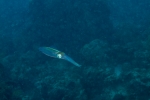 Original |
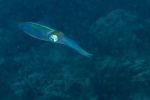 Cropped |
 Additional processing |
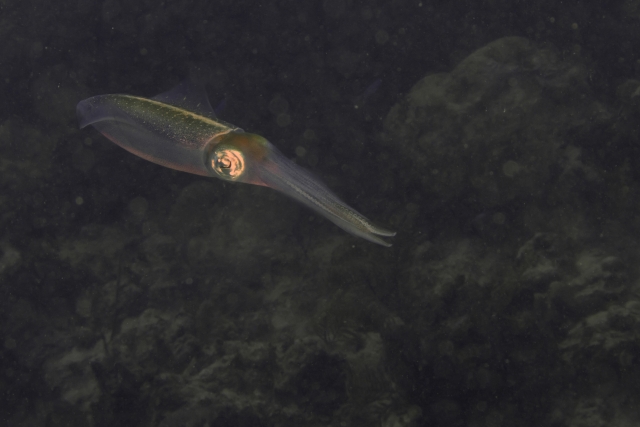 |
||
Technical Data: Canon EOS 7D, Canon EF-S 18-55mm f/3.5-5.6 II at 55mm. 1/300 sec at f/13. ISO 320. Ikelite Housing and Port with dual Ikelite 161 Strobes in eTTL mode. Raw conversion in Adobe Camera Raw.
What do you think?
- Bill


